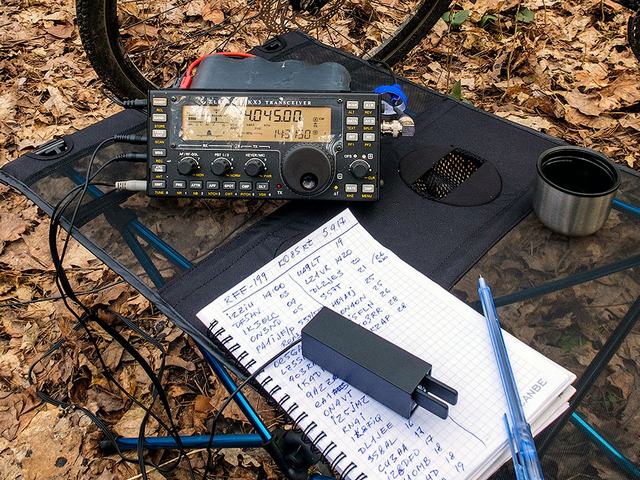WWFF Logsearch is able to work with logs in ADIF and CSV formats. It's hard to say why a strange, inconvenient and rather primitive CSV is needed if there is a widely used, convenient universal ADIF implemented into any modern logging software application. Therefore, in our RFF we will deal ONLY with logs in the ADIF format.
If you logging QSO using a logger on a computer, laptop, tablet, smartphone directly while operating — most likely, you do not need to read further. Your logging application is able to export an ADIF file.
Already first log sending to the log manager will demonstrate how correct the ADIF is generated by your logging application. Our experience during of several years shows that ADIFs generated by different applications are quite correct not always and not surely comply with the ADIF standard. Fortunately, we are only interested in a few fields, and your log will turn out to be quite useful in 99% of cases (although there have also been cases when a quite serious, respectable software gets up out of nothing... could not believe our eyes!).

If you log QSO on your paper sketchpad while being in “fields”, what is the most common, you just need to transfer logged QSOs to your logging application when you return home. This is a pretty boring exercise, especially if you made several hundred QSOs on your activation. But if you was successful to make thousands of QSOs... we do not envy you.
We know how to help you. There is a very effective, very small and extremely simple free application developed by DF3CB, which is designed exactly to transfer paper logs to your logging application. It is called FLE (Fast Log Entry) and is the simplest and, at the same time, the fastest and most effective tool to get ADIF from a paper log. Moreover, FLE is especially “sharpened” for WWFF — its ADIF files are the best for WWFF. In our experience, you need no more than 10 minutes to insert a hundred of QSO into an electronic log. The resulting ADIF can be sent to log manager for uploading to WWFF Logsearch, can be uploaded to eQSL or LoTW, and can be imported into your usual everyday logging software application.
So meet FLE and use it!
UPD. 23.V.2018 Important notes:
- When you are logging your QSO in any logging software during activation by a team, pay special attention to fixing operator change.
If the call signs of operators, who conducted out certain QSO are indicated in the log sent for the credit, the activation will also be credited to each operator personally in the volume of the QSO conducted by him. Otherwise, activation will only be credited to the team call sign used on the air. - P2P activity — Park-To-Park, which is still little known to us, is very popular among WWFF participants abroad. Here are taken into account the QSO, established between amateurs, while both of them are in their “parks” (WWFF-references).
In our experience, WWFF LogSearch still does not detects these QSO automatically, and it is necessary to specify WWFF-reference numbers of your correspondents in your log distinctly. Even if P2P is still out of your interests, your correspondent is most likely expects for these P2P. - Data fields SIG and SIG_INFO are provided for it in the ADIF format. First field should be set to WWFF value, and second field should contain WWFF-reference number of your correspondent, for example, RFF-0200.
- In order to be uploaded to WWFF LogSearch automatically, logs should contain your WWFF reference indication.
Data fields MY_SIG and MY_SIG_INFO are provided for this in the ADIF format. First field should be set to WWFF value, and second field should contain your WWFF-reference number of your correspondent, for example, RFF-0200. Logs can be uploaded even without these two fields in the “manual” mode. But if these fields are in your log and are properly set, this will make the task of the log manager much easier. - Your logging software, most likely, still does not support these fields. But they can be easy included into your ADIF-file using even simplest text editor, for example, “Notepad”. And it is much more convenient to usefor this a special ADIF editor, for example, a free ADIF-master.
- Those HAMs who are logging their QSO on a paper, can use free FLE software for converting log into the electronic form, where all these fields are already supported.


